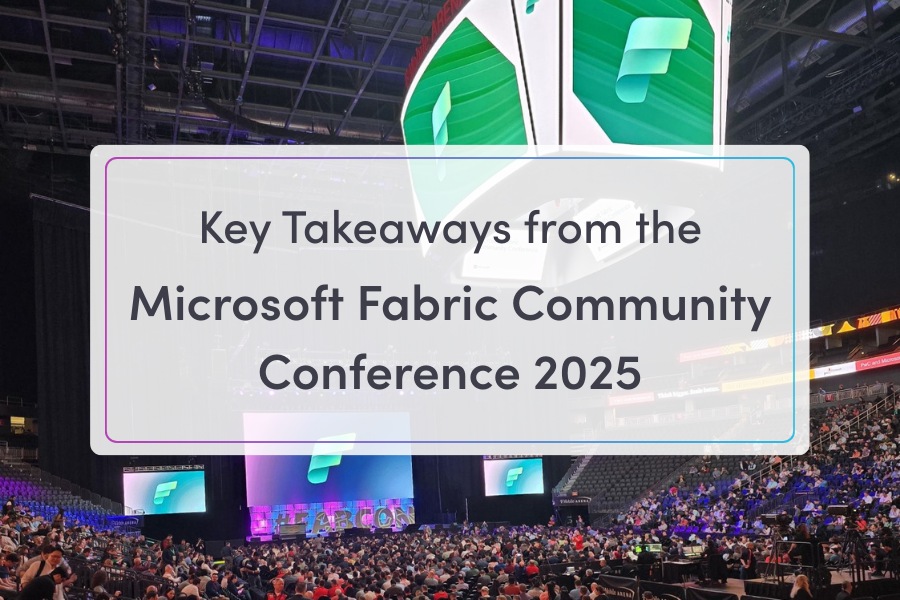Microsoft Fabric is transforming data management, but optimizing its use is key to unlocking its full potential.
In our recent webinar, “Smarter Capacity, Performance, and Cost Management in Microsoft Fabric,” Quisitive’s experts, fresh from their gold sponsorship at the Microsoft Fabric Conference 2025, shared three actionable strategies to enhance performance and reduce costs. Led by Bob Cherupata and Josh Persons, the session offered practical insights for organizations using Fabric.
Below is a summary of their advice. Get more details from the webinar.
Why Microsoft Fabric Stands Out
Fabric streamlines data operations by integrating tools like Power BI and Data Factory into a unified platform. Its OneLake architecture provides a secure, centralized data lake, enabling efficient data reuse and governance. With built-in AI capabilities, including Copilot and integration with advanced machine learning workflows, Fabric accelerates insights and integrates seamlessly with Microsoft 365 and Azure for optimal ROI.
However, without strategic management, costs can escalate, and performance may falter. These 3 strategies address those challenges.
Strategy #1: Optimize with Robust Monitoring
Effective capacity monitoring prevents unexpected costs. The Capacity Metrics App, available on AppSource, offers a clear view of usage across datasets, pipelines, and more, highlighting spikes and throttling to guide cost management.
For deeper analysis, the Fabric Unified Admin Monitoring (FUAM) tool, available on GitHub, provides detailed insights into user activity and workspace performance. We recommend using both tools to ensure comprehensive oversight of your Fabric environment.
Strategy #2: Scale Efficiently
Smart scaling aligns capacity with demand. End-of-day scaling reduces capacity (e.g., from F8 to F2) during off-hours using Azure Logic Apps or custom automation scripts via the Microsoft Fabric API or Azure Functions.
For advanced efficiency, job-based scaling adjusts capacity for specific tasks, such as monthly reports. At FabCon 2025, Bob and Josh demonstrated a pipeline that scales to F8 for a task, then reverts to F2, optimizing costs without compromising performance.
Check out the on-demand webinar to see this demo in action >
Strategy #3: Manage Throttling Effectively
Throttling occurs when capacity limits are exceeded, impacting performance. Microsoft’s surge protection (in preview) prioritizes interactive tasks, like reports, by pausing background jobs at a set threshold (e.g., 75% capacity) and resuming at a lower threshold (e.g., 25%).
For greater control, capacity isolation divides capacity (e.g., an F32 into two F16s), assigning stable workloads to one and periodic or development tasks to others. This ensures critical operations remain unaffected.
Explore More in our On-Demand Webinar
These strategies are a starting point. The full webinar provides in-depth demos and expert guidance from Quisitive’s team.
Optimize your Fabric investment today for enhanced performance and cost savings.
Bonus: Quisitive’s Fabric Design Lab
To accelerate your Fabric journey, Quisitive offers the Fabric Design Lab, a three-week program developed in collaboration with Microsoft. It delivers a tailored roadmap, technical guidance, and governance best practices, with potential funding to offset costs, ensuring long-term success.
Take the first steps towards modern data utilization.
Quisitive’s Microsoft Fabric Design Lab combines education, use case development, and strategic planning to show how Fabric can harness your data to provide actionable insights for your organization.

;)




